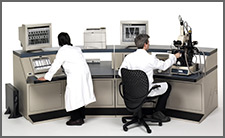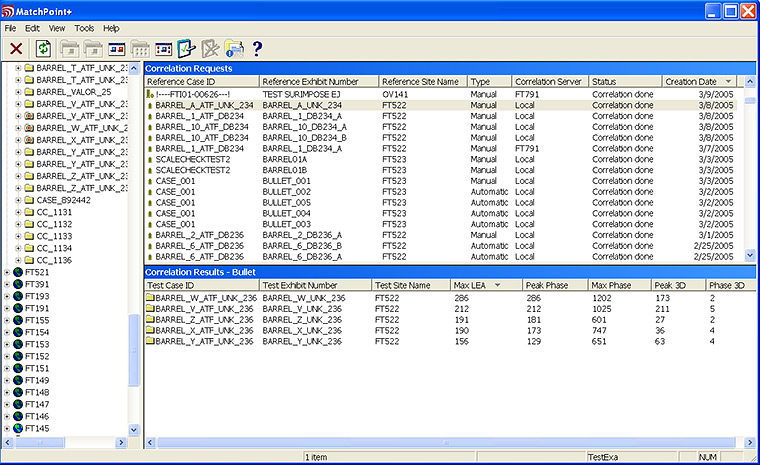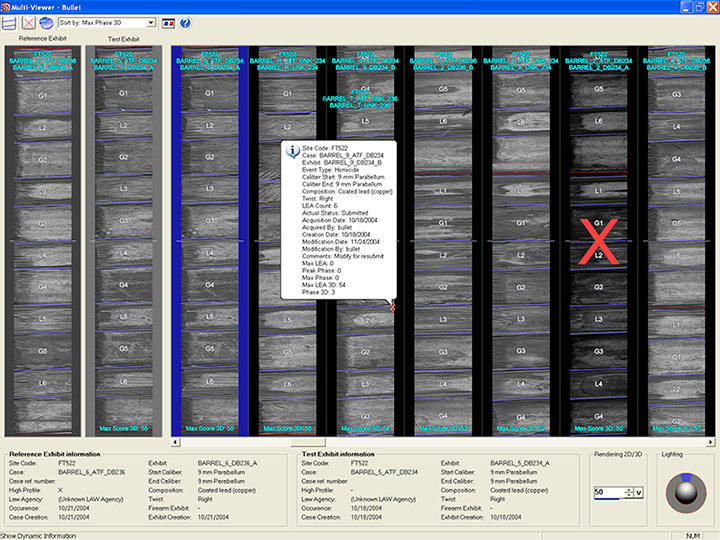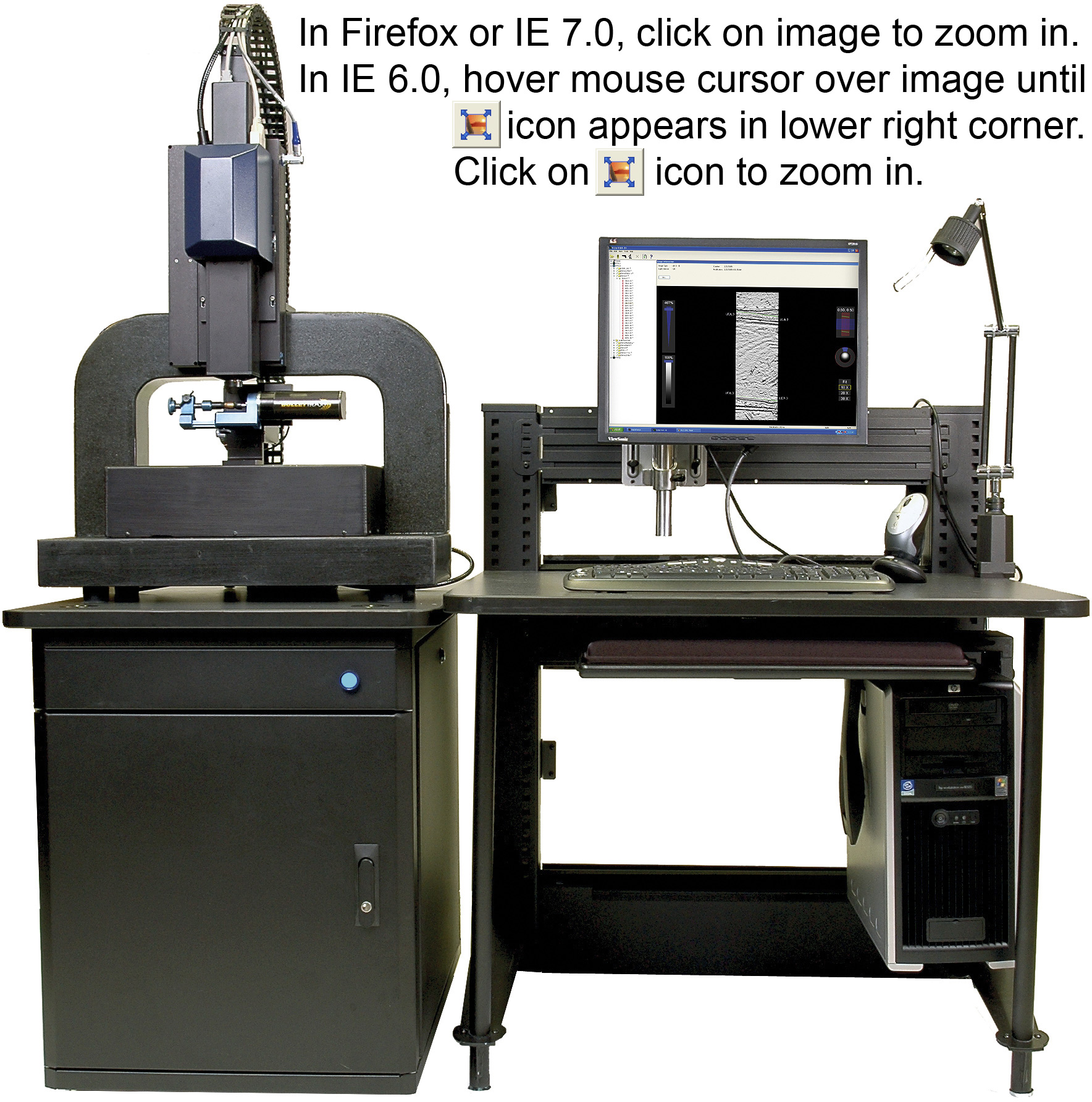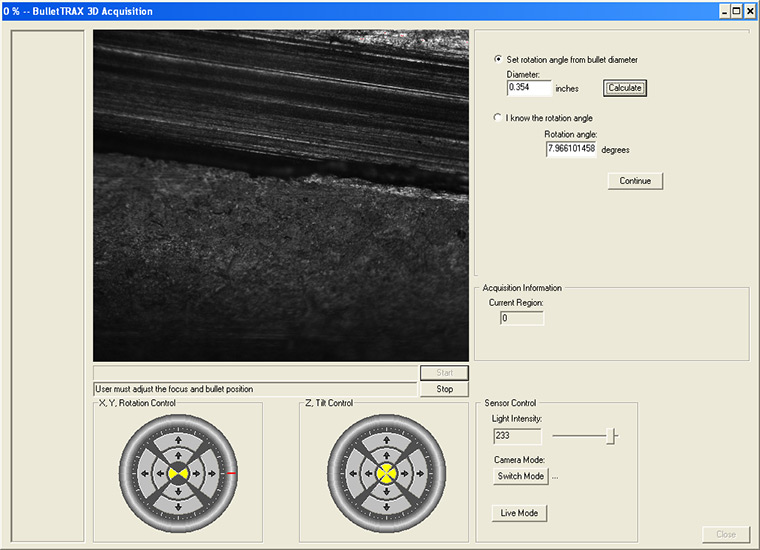Home | Glossary | Resources | Help | Contact Us | Course Map
Archival Notice
This is an archive page that is no longer being updated. It may contain outdated information and links may no longer function as originally intended.
Computer-Based Technologies
In recent years, advanced computer-based tools have been used to screen firearms-related evidence items for potential linkages to local, regional, and international incidents. Advanced computer and optical hardware are combined with software to manage a combination of specialized computer algorithms, pattern recognition technology, and digital imaging.
The product of this advanced technology is a preliminary computer-based selection of high-probability associations. As a result, investigative resources are focused on a typically smaller group of individuals who often commit a disproportionately larger percentage of shooting crimes.
IBIS
The system for accomplishing these computer-based comparisons or correlations is the Integrated Ballistics Identification System (IBIS ®), developed by Forensic Technology, Incorporated (FTI), of Montreal.
This technology can be configured according to the needs of an individual law enforcement agency.
In the United States the use of this technology is coordinated by the National Integrated Ballistic Information Network (NIBIN), a group governed by an executive board with three members, including one each from
- Bureau of Alcohol, Tobacco, Firearms and Explosives,
- Federal Bureau of Investigation,
- State or local law enforcement agency.
This nationally interconnected, computer-assisted system facilitates the transmission of digital images of fired bullets and cartridge cases.
| Note: |
| It should be stressed that a high correlation score by the IBIS® system is an investigative tool and must be followed by a documented forensic examination per laboratory protocol for presentation in court. |
MatchPoint+™
After images have been uploaded into IBIS ®, the examiner can use a MatchPoint+ workstation to perform correlations and on-screen preliminary side-by-side comparisons of images that are stored in the centralized IBIS database.
MatchPoint+™ further allows images to be altered in the following ways:
- Magnification
- Light intensity and direction
- Contrast
- Depth
- Dimensional aspects
|
|
|
BulletTrax-3D™
BulletTRAX-3D™ is the latest technological evolution from FTI (Forensic Technology, Inc.) and is designed to address the comparison needs of the forensic firearms examiner. When paired with MatchPoint+™, it allows the examiner to personally conduct preliminary correlations prior to actual microscopic comparisons.
This system moves beyond IBIS® technology and includes the following:
- A confocal microscope designed to simultaneously gather two- and three-dimensional images of bullet surface topography
- A digital camera to capture the data
- An automated bullet holder to physically manipulate bullets, including damaged bullets
- Computer hardware
- Proprietary software to manage image capture, transmission, and storage on a computer server
This system expands case linkage capabilities from criminal cases to a broader scope that includes terrorist activities. As such, the examiner may be able to develop linkages between shooting incidents as a means of intelligence gathering. BulletTRAX-3D™ was preceded by products using the BulletProof™ and BrassCatcher™ software. These systems are still used by many laboratories.
Additional Online Courses
- What Every First Responding Officer Should Know About DNA Evidence
- Collecting DNA Evidence at Property Crime Scenes
- DNA – A Prosecutor’s Practice Notebook
- Crime Scene and DNA Basics
- Laboratory Safety Programs
- DNA Amplification
- Population Genetics and Statistics
- Non-STR DNA Markers: SNPs, Y-STRs, LCN and mtDNA
- Firearms Examiner Training
- Forensic DNA Education for Law Enforcement Decisionmakers
- What Every Investigator and Evidence Technician Should Know About DNA Evidence
- Principles of Forensic DNA for Officers of the Court
- Law 101: Legal Guide for the Forensic Expert
- Laboratory Orientation and Testing of Body Fluids and Tissues
- DNA Extraction and Quantitation
- STR Data Analysis and Interpretation
- Communication Skills, Report Writing, and Courtroom Testimony
- Español for Law Enforcement
- Amplified DNA Product Separation for Forensic Analysts


